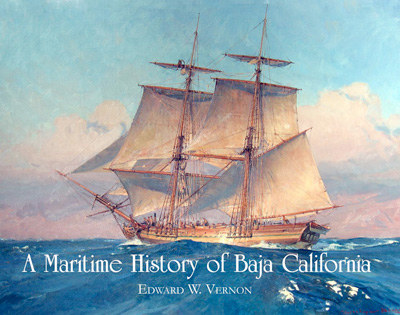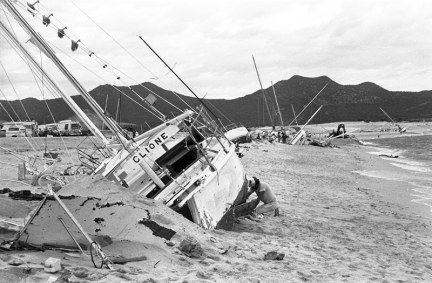
Baja History Book
It will only be a few months before many members of the this year’s Mexico cruising class leave the mainland to head up to the spectacular cruising grounds of the Sea of Cortez. At first glance, the Sea might look like a place where the desert meets the ocean and not much ever happens. But looks can be deceiving, as you’ll quickly discover if you read Edward W. Vernon’s A Maritime History of Baja California, a beautifully written and superbly illustrated 300-page hardback.

© Latitude 38 Media, LLC
Vernon’s maritime history starts as far back as when ‘Baja California’ was known as Isle de California — early charts showed it to be surrounded by water. It continues right up to the present. Covered are the visits by the Manilla galleons, the French and Spanish pirates, the attempts at settlements, the treks north by the friars to establish the missions in Alta California, the various wars and battles, the sinking and grounding of vessels, and much more.
When it comes to the loss of vessels, few can compare with the loss of the magnificent 162-ft Newport Beach-based schooner Goodwill and her entire crew of 10 — or maybe 11 — on Sacramento Reef. There’s even an aerial photo of Goodwill, which twice won the Barn Door Trophy in the TransPac, as she lies in pieces atop the notorious reef.
In reading the book, you’ll learn how rapidly some things have changed in a short period of time. Who would think, for instance, that just 150 years ago there was enough water flowing in the Colorado River that Yuma, Arizona was a U.S. port of entry! And that there was regular ship service from San Francisco to Yuma. Even more mind blowing, vessels were able to sail all the way up the Sea of Cortez and offload cargo onto shallow draft vessels that were then able to take the cargo as far north as what is currently Lake Mead/Las Vegas. For the geographically challenged, that’s farther north than Morro Bay.
The book will no doubt provide succor for those who might be stuck at Cedros Island attempting a Baja Bash, for there is a chart on page 195 showing the tracks of Francisco de Ulloa’s 70-ton flagship Trinidad as Ulloa and crew tried to head north from Cedros in 1540. They were driven back to the island three times by storms, and it took them three months to clear the north end of the island.
There’s even a Sausalito angle. At the start of World War I, 11 German sailing cargo ships with 300 German crew found themselves interned at Santa Rosalia. Some of the vessels stayed on the hook in the same place for up to 10 years before being brought north to Sausalito, where they were converted to lumber barges and such.

©2012 Latitude 38 Media, LLC
Then there’s the section on the Cabo storm of ’82, where scores of cruising yachts — including Bernard Moitessier’s beloved Joshua, now in a museum in France — were driven onto the beach and either badly damaged for destroyed. We’re jazzed that Vernon used a number of our photos to illustrate the destruction.
Published by Viejo Press of Santa Barbara, with the cooperation of the Maritime Museum of San Diego, and distributed by the University of New Mexico Press, A Maritime History of Baja California sells for $38 from Amazon. That might be a little steep for some cruisers’ budgets, but if shared by the crews of four or five boats, it would be a bargain. Enjoy!
